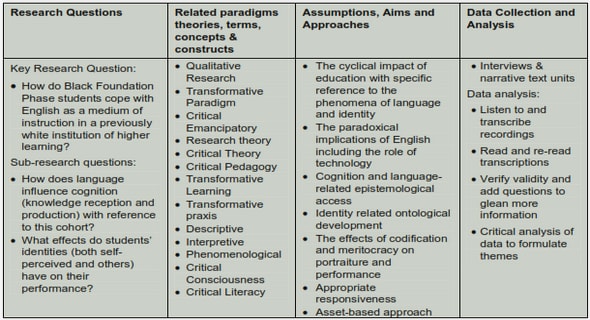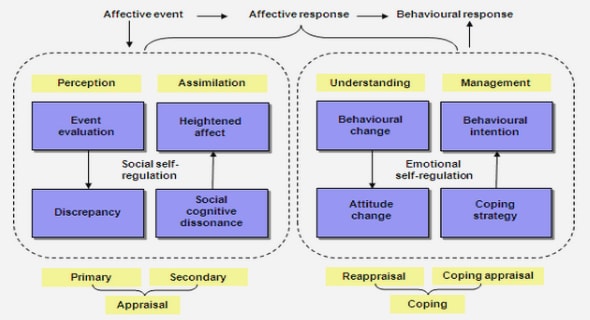Get Complete Project Material File(s) Now! »
LITERATURE REVIEW ON MODELING AND SIMULATION OF HEAT EXCHANGER
The shell and tube heat exchanger has been commonly used in the industry. It is important to know the dynamic behaviour of the heat ex changer in order to predict how the system will res pond to a change in flow rate, temperature, pressure, etc …. Mode ling and simulation of the dynamic behaviour of a shell-and-tube heat exchanger are presented in [1,2,3]. In [1], an experimental data was presented on the transient behaviour of an industrial scale shell and tube heat exchanger condensing a mixture of steam and air under reduced pressure. The system was subjected to step changes in steam flowrate, air flowrate, coolant flow rate and coolant inlet temperature.
An understanding of the process is a necessary pre-cursor to modelling and simulation. These data were used to valid the mathematical model developed in [3]. In [2], a horizontal shell and tube heat exchanger was studied with both parallel and counter flow cases. It is assumed that the fluids are incompressible single phase, the temperature variation on both sides is relatively small, the density is constant, and there is no mass storage on either side of the heat exchanger. Energy balance equations at each well-mixed node were used to carry out the modelling. For each node, three energy balance equations are developed with the shell side fluid, the tube metal and the tube side fluid. Heat transfer correlations of shell side and tube side were taken from the paper of Kutbi. The goal of this model is to predict temperature distribution of the cold and hot fluids. The heat exchanger model developed in [2] has enough flexibility to allow both qualitative and quantitative comparisons of different designs for varying design goals. The precision of model is increased with increasing the number of weilmixed nodes set by user.
The restriction of this model is that we cannot predict the flow rate and the pressure offluids. The model developed in [3] overcomes this problem. In [3], the studied heat exchanger is also of horizontal shell and tube type but with the use of steam as the hot fluid and water as the cold fluid. In this study, a model has been developed that is able to simulate the steady state and dynamic behaviour of a condenser under conditions that can be found in chemical processes. Modelling was also done based on the conservation principle for each control volume, which is bounded by the baffles in the condenser. Material and energy balance equations are used for each phase in each control volume and the heat and material fluxes between the phases are determined using local transfer coefficients that are calculated for each baffle space. By comparing with the model in [2] which can just predict the temperature distribution of fluids, the model in [3] is able to predict steam and condensate flow rates, pressure drop, and temperature of steam, condensate, wall and coolant.
Moreover, it also includes the detennination of the pressure and temperature profile along the heat ex changer. In this thesis, mass and energy balances are used to develop a mathematical model for a vertical shell-and -tube heat exchanger with one shell pass, two tube passes and no baffle. The hot fluid is steam and the cold fluid is water. The objective of this model is to predict steam and condensate flow rate, steam pressure and temperature, and condensate temperature as in [3]. Moreover, condensate level is also simulated for it is important in a vertical shell and tube heat exchanger.
Introduction to Neural Networks
Artificial Neural Networks is a system loosely modeled on the human brain. The field goes by many names, such as connectionism, parallel distributed processing, neurocomputing, natural intelligent systems, machine learning algorithms, and artificial neural networks. It is an attempt to simulate within specialized hardware or sophisticated software, the multiple layers of simple processing elements called neurons. Each neuron is linked to certain of its neighbours with varying coefficients of connectivity that represent the strengths of these connections. Training is accompli shed by adjusting these strengths to cause the overall network to output appropriate results.
General structure of artifidal neural networks
The developer must go through a period of trial and error in the design decisions be fore coming up with a satisfactory structure of artificial neural network for a particular system.In a biological brain, each neuron can connect with up to 200 000 other neurons and the total number of connection is almost infinite. In an artificial neural network however, the connection structure is much simpler by grouping neurons into one input layer, one or several hidden layers and one output layer. The figure 5 shows a simple structure of a neural network. The input layer consists of neurons that receive input form the extemal environment. The output layer consists of neurons that communicate the output of the system to the user or extemal environment. There are usually a number of hidden layers between the input and output layers; the figure above shows a simple structure with only one hidden layer.
Preliminary analyses of the condenser system
The diagram of the condenser system in CTT laboratory of École de Technologie Supérieure has been shown in chapter 2 and reproduced in figure 1 for easy follow up purpose. Sorne preliminary analyses are needed before constructing appropriate neural networks. These analyses in elude (1) determination of input and output parameters; (2) choice of experimental data sets; (3) division of data sets into subsets for training, validating and testing the model; and ( 4) normalization of data.
Data division for testing neural network mode!
It is a common practice to split the available data into three sub-sets for training and validating each neural network model and for comparing different models. The basic idea is to withhold a small ‘validation subset’ to be used as a convergence criteria for each ANN model; (2) another small ‘test subset’ to be used to compare different models [ 4]; (3) the remaining subset for training each model. In this study, the complete data is splited into three subsets in the following mann er : (1) the validation subset takes 25% of the data set and is composed of every fourth line of the overall set, i.e lines 4,8,12, … ,1128; (2) the test set takes another 25% of the data set and is composed of lines 2,6,10, … ,1130; and (3) the training set takes the remaining 50% ofthe overall set.
A PHYSICAL MODEL FOR THE STEAM CONDENSER SYSTEM
Objective A physical model is herein developed for the same steam condenser system previously described. This approach is based on the conservation of mass and energy. The physical model has the same objective as the NN model, which is to predict output quantities in function of inputs. It differs from the NN model by several aspects including the following
(1) The physical model describes the response of the system by using equations derived from physicallaws.
(2) The physical model directly takes real output quantities such as pressure,temperature, heat transfer, mass flow, etc … as degrees of freedom (DOF), which NN model use meaningless quantities such as weight coefficients, bias constants or transfer functions.
(3) The physical model dynamically describes the system from an initial condition through out transient states until a new steady state condition is reached, while the NN mo del just treats steady state conditions
( 4) The number of DOF of the physical madel depends on the number of discretion ‘control volumes’, such as described in the next section.
(5) The coolant water flow rate, mw is not considered in NN model for it is practically unchanged during all operating conditions but is now considered in physical rnodel for it simply appears in conservation equations.
( 6) The physical model takes saturated ste am conditions into account so that the steam pressure P s and temperature T s are related to each other by the saturated steam table, while NN model treats them like two independent quantities.
Table of contents :
CHAPTER 1 LITERATURE REVIEW ON MODELING AND SIMULATION OF HEAT EXCHANGER
CHAPTER 2 CALIBRATION SYSTEM OF STEAM FLOWMETERS
2.1 Description of the system
2.2 Geometrie parameters of the heat exchanger
CHAPTER 3 DEVELOPMENT OF NEURAL NETWORK MODEL FOR A CONDENSER SYSTEM
3.1 Introduction to Neural N etworks
3.1.1 Basic unit of neural networks
3.1.2 General structure of artificial neural networks
3.1.3 Training a neural network
3.2 Preliminary analyses of the condenser system
3.2.1 Input and output parameters
3.2.2 Choice of experimental data
3.2.3 Data division for testing neural network model
3.2.4 Data normalization
3.3 Determination of ANN architecture
3. 3 .1 General approach
3.3.2 Mathematical training algorithm
3.3.3 Resulting NN for steam condenser system
3.4 Application ofretained neural network
3.5 Conclusion
CHAPTER 4 A PHYSICAL MODEL FOR THE STEAM CONDENSER SYSTEM
4.1 Objective
4.2 Modelling
4.3 Mathematical equations of the model
4.3.1 Continuity equations
4.3.2 Energy equations of control volumes on shell side
4.3.3 Energy equations of control volumes on tube side
4.3.4 Heat transfer equations across tube walls
4.3.5 Miscellaneous relationships
4.4 Equation system solving
4.5 Model validation
CHAPTER 5 CONCLUSION
ANNEXS
1: Values ofthe weight matrices w1, w2, w3 and bias b1, b2, b3
2 : Programs in matlab
BIBLIOGRAPHY


